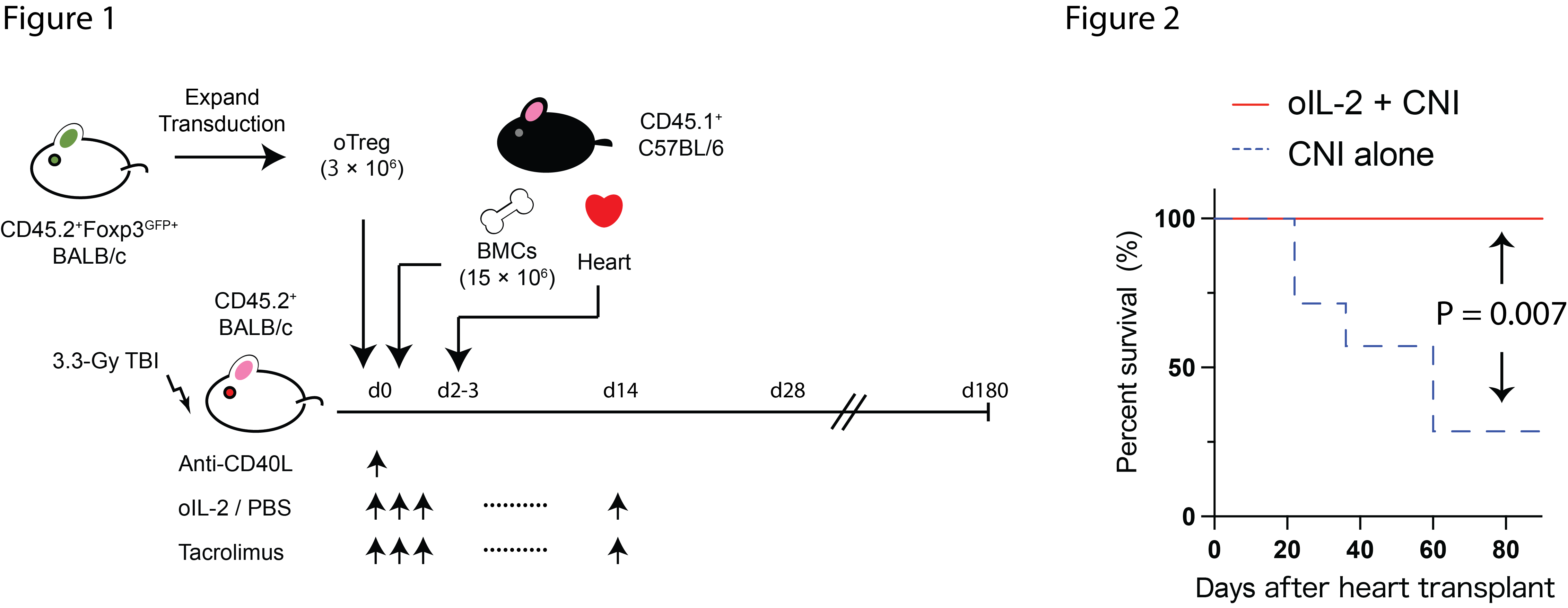Engineered IL-2 Plus Calcineurin Inhibitor Synergistically Expands Regulatory T Cells Transduced with Engineered IL-2 Receptor and Facilitates Establishment of Transplantation Tolerance
1Urology, Tokyo Women's Medical University, Tokyo, Japan, 2Blood and Marrow Transplantation, Stanford University, Stanford, CA, 3Molecular and Cellular Physiology and Structural Biology, Stanford University, Stanford, CA
Meeting: 2022 American Transplant Congress
Abstract number: 382
Keywords: Bioengineering, Bone marrow transplantation, FK506, Mice
Topic: Basic Science » Basic Science » 10 - Treg/Other Regulatory Cell/Tolerance
Session Information
Session Name: Immunoregulation and Tolerance
Session Type: Rapid Fire Oral Abstract
Date: Monday, June 6, 2022
Session Time: 5:30pm-7:00pm
 Presentation Time: 6:10pm-6:20pm
Presentation Time: 6:10pm-6:20pm
Location: Hynes Room 302
*Purpose: Clinical trials for regulatory T cell (Treg) therapy in organ transplant has shown promising results. However, it is still under the debate which drugs should be used as a standard immunosuppressive regimen in combination for Treg cell therapy. Calcineurin inhibitor (CNI) is one of the most common immunosuppressants for organ transplantations, although it might negatively affect Tregs by inhibiting IL-2 production in the other conventional T cells. To replace IL-2 signals selectively in Tregs, we introduce here an engineered orthogonal IL-2 (oIL-2) cytokine / cytokine receptor (R) pair that specifically binds with each other but does not with their wild type counterparts. We previously reported that oIL-2 stimulation provides STAT5 signaling in Tregs transduced with oIL-2R and facilitates tolerance induction. We demonstrate here that the cytokine engineering approach synergistically works with CNI.
*Methods: Murine Tregs were isolated from secondary lymphoid tissues and transduced with oIL-2R through retroviral vector during ex vivo expansion. Tregs transduced with oIL-2R (oTregs) were infused into syngeneic mice together with bone marrow allograft obtained from fully MHC-mismatched donor followed by heart transplantation from the same allogenic donor (figure 1). oIL-2 and CNIs were administered for 14 days after transplantation. Peripheral blood chimerism and heart graft survival were observed after drug cessation.
*Results: oIL-2 + CNI treated mice (N = 7) showed significant increase in oTreg population in peripheral blood compared to CNI alone mice (N = 7) (14.5 ± 5.9 % v.s. 8.13 ± 4.0 %, p = 0.0262). oIL-2 administration did not increase the population of other T cell subsets. The proportion of donor blood cell chimerism was significantly higher in oIL-2 + CNI treated mice compared to that in CNI alone mice on d180 (28.9 ± 17.4 % v.s. 7.59 ± 10.4 %, p = 0.0251). No mice treated with oIL-2 + CNI showed heart allograft rejection, whereas 5 out of 7 mice with CNI alone eventually rejected the allograft (Figure 2, Log rank test, p = 0.0070).
*Conclusions: The data implies that cytokine / cytokine receptor engineering improves the effects of Treg therapy under CNI-based regimen.
To cite this abstract in AMA style:
Hirai T, Lin P, Ramos TL, Garcia K, Negrin RS. Engineered IL-2 Plus Calcineurin Inhibitor Synergistically Expands Regulatory T Cells Transduced with Engineered IL-2 Receptor and Facilitates Establishment of Transplantation Tolerance [abstract]. Am J Transplant. 2022; 22 (suppl 3). https://atcmeetingabstracts.com/abstract/engineered-il-2-plus-calcineurin-inhibitor-synergistically-expands-regulatory-t-cells-transduced-with-engineered-il-2-receptor-and-facilitates-establishment-of-transplantation-tolerance/. Accessed December 25, 2025.« Back to 2022 American Transplant Congress

